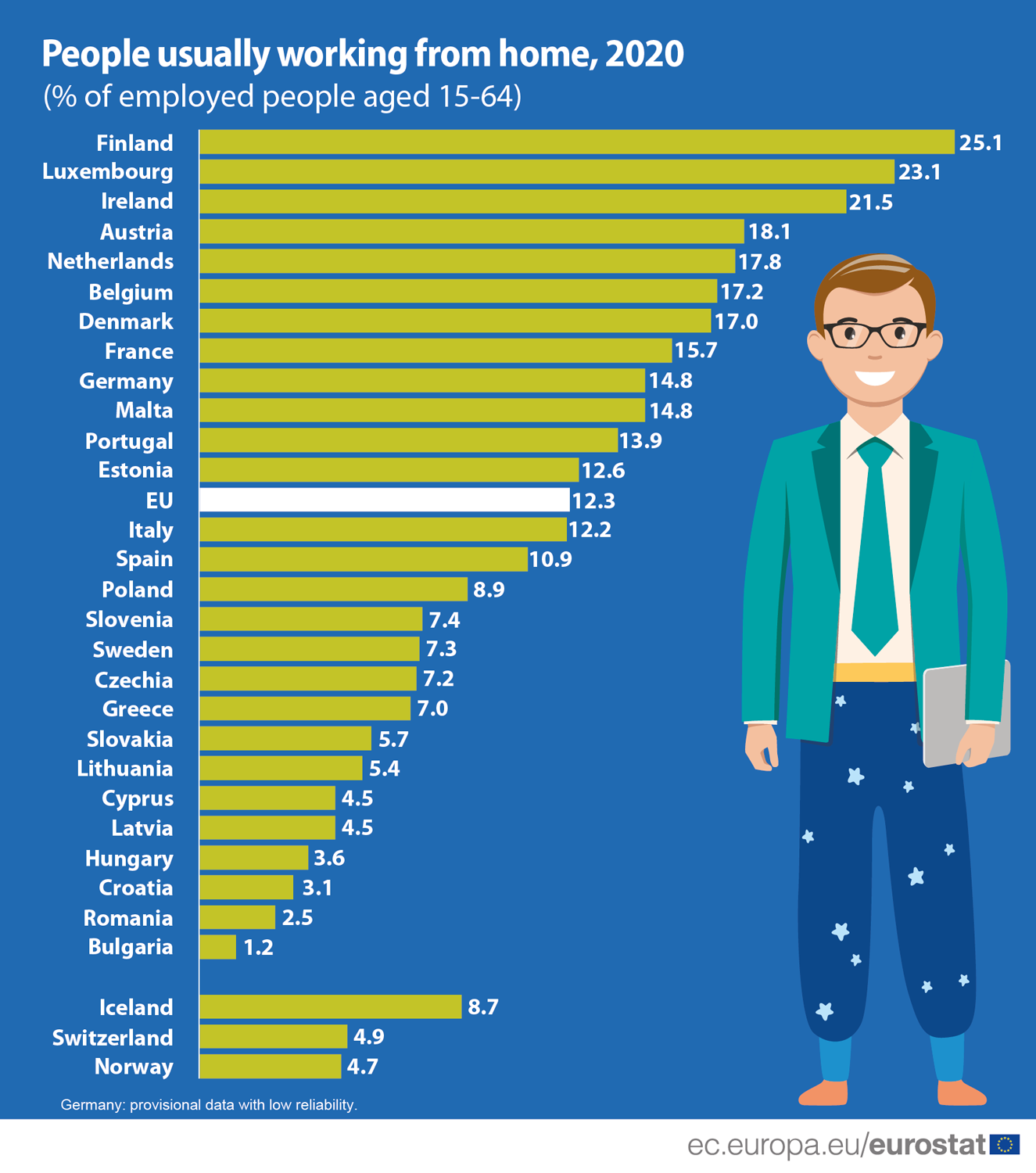
The social distancing measures that were introduced as a response to the COVID-19 pandemic forced many people to work from home. In 2020, 12.3% of employed people aged 15-64 in the EU usually worked from home, although this share had remained constant at around 5% over the past decade.
In previous years, the share of self-employed persons who reported that they usually work from home has been consistently higher than the share of employees in the same situation. However, the gap became smaller in 2020 as the share of employees who usually work from home increased from 3.2% in 2019 to 10.8%, while the share for the self-employed increased to a smaller extent: from 19.4% in 2019 to 22.0% in 2020.
More women than men work from home
There are different trends according to the age and sex of workers when it comes to home working. In 2020, a higher share of women (13.2%) reported that they usually worked from home than men (11.5%).
Compared with other age groups, younger people were less likely to work from home in 2020: only 6.3% of those aged 15-24 reported that they usually worked from home, compared with 13.0% of those aged between 25-49 and 12.4% of those aged 50-64.
Source dataset: lfsa_ehomp
Highest share of people working from home in Finland, Luxembourg and Ireland
Finland topped the list of the EU Member States for home working, with 25.1% of employed people usually working from home in 2020. Finland was followed by Luxembourg (23.1%) and Ireland (21.5%). In contrast, the lowest shares of home-workers were reported in Bulgaria (1.2%), Romania (2.5%), Croatia (3.1%) and Hungary (3.6%).
This news is published on the occasion of the World Telecommunication and Information Society Day (ITU) on 17 May.
For more information:
- Eurostat Statistics Explained article on employment - annual statistics
- Eurostat website section dedicated to EU Labour Force Survey
- Eurostat database of EU Labour Force Survey
- “Usually working at home” means doing at home any productive work related to the current job for at least half of the days worked in a reference period of four weeks.
- Germany: Since the first quarter of 2020, the Labour Force Survey (LFS) has been integrated into the newly designed German microcensus as a subsample. Unfortunately, for the LFS, technical issues and the COVID-19 crisis have had a large impact on the data collection processes, resulting in low response rates and a biased sample. For more information, see here.
To contact us, please visit our User Support page.
For press queries, please contact our Media Support.


